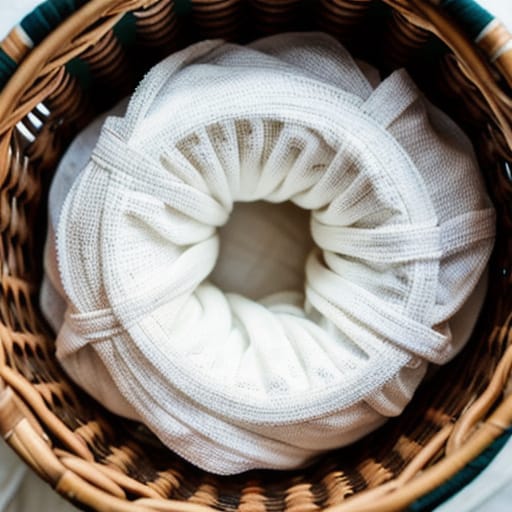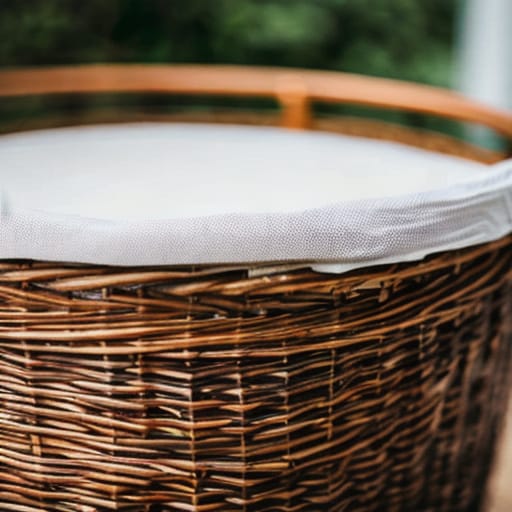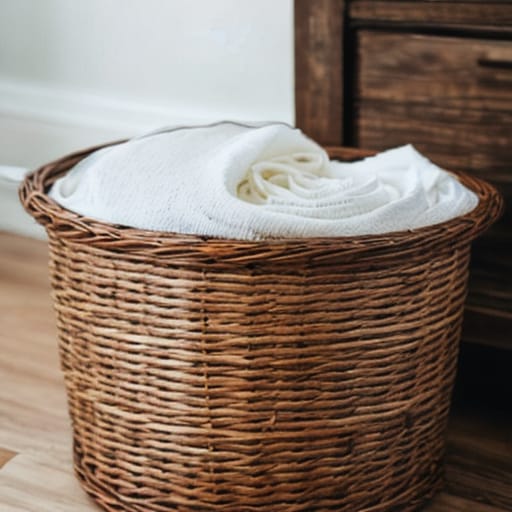That sinking feeling when you realize your once puffy, cloud-like down comforter has become a flat pancake lacking its signature fluffiness. What happened to the warmth and insulation you relied on to get a good night’s sleep?
This common problem typically comes down to the unique down structure and how to best care for its delicate feathers. By understanding what causes downfill to compress and lose loft, you can rescue your flat bedding and restore its pillowy potential.
What Makes Down Comforters Fluffy
The exceptional softness and warmth of down comforters come from the special properties of duck or goose down:
- Down consists of tiny, three-dimensional down clusters that trap heat. These clusters interlock to form a cozy, breathable barrier that keeps warmth next to your body.
- Feathers and down used as fill power are measured in hundreds to indicate quality. Higher numbers like 600 or 700 mean finer, more insulating down.
- Fluffy down comforters get their loft from baffle box construction: Fabric forms pockets that prevent fill from shifting, so it stays evenly distributed.
Over time, this structure can break down from use, cleaning, or improper storage. The inner shell and stitching may deteriorate, causing the fill to clump or escape. Delicate down also compresses with pressure.
Knowing how down comforters are made gives insight into keeping them plush. Now let’s explore why your bedding may have gone flat.
Top Causes of Flat Down Comforters
A sad, flat-down comforter kills that luxurious hotel bed feeling. Here are key culprits behind a comfy bedding’s collapse:
1. Improper Washing
It’s tempting to simplify laundry and throw your down comforter in the wash. However the agitation and spin cycle pressure can irreversibly flatten feathers and damage baffle boxes.
Always check manufacturer guidelines for washing methods or use professional dry cleaning.
2. Over-Drying
Extreme heat from electric or gas dryers cooks feather fibers. Brittle, fragmented down loses insulation power and can’t re-fluff.
Air dry comforters if possible or use low/delicate dryer settings with clean tennis balls to redistribute fill.
3. Poor Storage
Loosely packed comforters squeeze into small spaces well…too well! Down compresses and crumples when crammed in drawers, under beds in vacuums, or folded for months off-season.
Store comforters loosely in breathable bags so the fill stays springy.
4. Insufficient Fluffing
It’s easy to smooth your comforter neatly onto your bed, but this presses air pockets flat. Failing to re-fluff between uses smushes fill flat over time.
Get in the habit of tossing, kneading, and shaking out your comforter to undo compression before making your bed.

Reviving a Flat Down Comforter
Don’t despair if your once billowy comforter now resembles a deflated pool float. Our fluffing methods can restore loft and luxury to tired bedding.
Fluff by Machine: Toss 2-4 clean tennis balls into a large commercial dryer with your comforter on low heat for 45 minutes, pausing halfway to redistribute fill. The balls gently beat and expand down clusters while warm air reopens compressed fibers.
Fluff by Hand: Lay the comforter flat and bend each third over itself to form a zig-zag pattern across the floor. Grasp ends and shake vigorously up and down for 2-3 minutes to break up matted fill. Finish by tossing high overhead several times.
For badly crushed down, try steam fluffing. Drape the comforter over a clothes drying rack and lightly steam both sides from above. Avoid direct contact to prevent moisture damage. The steam swells sticky fibers apart. Followed by hand fluffing.
Keeping Down Comforters Fluffy
Preventing flattened, clumpy down will keep your comforter cloud-cozy for years. Our pro tips help properly maintain that snuggly bedroom feeling:<div className=”TableContainer”>
| Do | Don’t |
|---|---|
| Fluff or shake out comforter regularly | Wash too frequently (1-2 times per year max) |
| Air or line dry | Use bleach, fabric softener or hot water for washing |
| Store loosely in breathable bag | Fold or tightly pack for storage |
| Use duvet cover | Over-dry or expose to direct sunlight |
Follow care instructions, handle gently in washing, and give your comforter breathing room. A little attention goes a long way towards preserving plushness.
Investing in Quality Down Comforters
Like most bedding essentials, you get what you pay for with down comforters. Higher thread counts, fill powers and hypoallergenic options improve durability, insulation, and comfort – but cost more.
Here are exceptional down comforters delivering nightly luxury:
Brooklinen Down Comforter
| Price | $319+ |
|---|---|
| Highlights | 700 fill power, 400 thread count cotton shell, OEKO-TEX certified hypoallergenic |
| Fluffiness | Ultra plush with precision baffle boxing to limit shifting |
| Warmth | Lightweight yet insanely cozy |
| Care | Dry clean only |
Levtex Down Comforter
| Price | $299+ |
|---|---|
| Highlights | Hypoallergenic 750 fill power baffle box construction, 400 thread count cotton cover |
| Fluffiness | Extra thick with overfilled baffle boxing |
| Warmth | Lightweight but cozy in any climate |
| Care | Dry clean or machine wash delicate cold |
Investing more in quality means your comforter should maintain loft and last over a decade rather than lose shape after a few years. Consider durability, fill power, thread count, and overall care recommendations when purchasing.

Conclusion
There’s nothing worse than a favorite down comforter going flat, negating that delicious sinking-in sensation. But understanding what causes fill to compress arms gives you the knowledge to revive limp bedding and prevent a repeat “pancake syndrome”.
Frequently Asked Questions
What is the best way to wash my down comforter?
Check the manufacturer’s care label, but most down comforters require professional dry cleaning or very delicate washing in cold water on a gentle cycle. Never use hot water or put down in the washing machine agitator – this can destroy baffle boxes.
How often should I wash my down comforter?
Only wash a down comforter once or twice a year at most. Frequent washing strips the natural oils that help feather clusters remain fluffy. Spot clean when needed between deeper cleaning.
Why does my down comforter get lumpy?
Down clusters tend to shift and clump more over time, especially if baffle box stitching deteriorates. Improve comfort and extend comforter life by [re-fluffing regularly](internal link to refluffing section).
What is the benefit of a duvet cover?
Using a removable duvet cover over your down comforter protects the delicate shell fabric from body oils and spills that can degrade fill power. Just launder the duvet cover more often.
Should I store my down comforter in the closet?
Never pack down bedding tightly in closets long term. The compression ruins resiliency. Store in breathable cotton cases under beds or in bedroom storage chests.
How can I make my flat down comforter fluffy again?
Review our [recommendations for reviving flattened down](internal link to refluffing section) using tennis balls in dryers, hand massaging or steaming to restore loft. With patience, even pancake-flat bedding rebounds.
What fill power is warmest in a down comforter?
Higher fill powers over 600 provide the most insulation and plushness. However, lower fill power down wrapped in cozy exteriors like flannel can also be delightfully warm and hypoallergenic for allergy sufferers.








